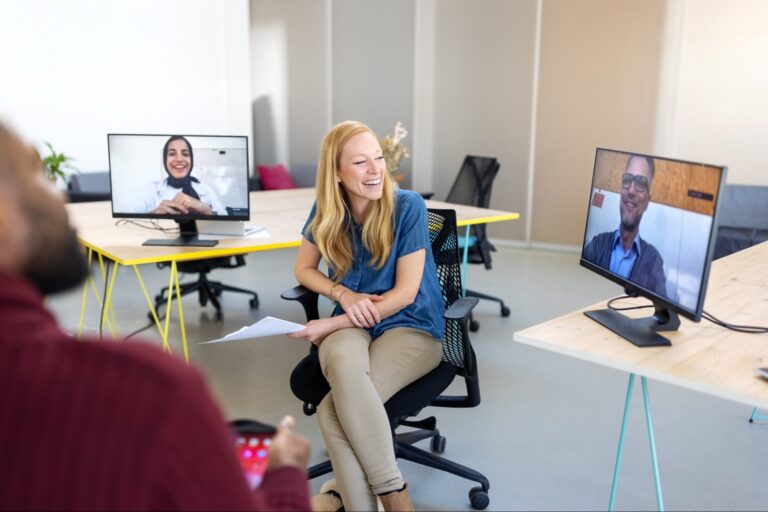
Opinions expressed by Entrepreneur contributors are their own.
With today’s employees seeking more say over where they live and work, hybrid work models are becoming increasingly popular. So, how can you make a hybrid workplace work for both in-office and remote team members?
Hybrid has its challenges — it costs more money, it takes intentional effort to build relationships, and you have to be strategic about resource spend. For some organizations, these investments can feel prohibitive. If that’s the case for you, then you might be better off with a model that’s either fully in-person or fully remote.
But hybrid is possible … if you approach it and invest in it the right way to make it work. Here are five ways you can harness hybrid work and make it work for your team:
Related: How to Manage a Happy and Healthy Hybrid Workforce
1. Intentionally design social experiences
Be purposeful about creating social activities that transcend locations. Design rituals that foster a sense of camaraderie, belonging and community. Bring in-office and remote team members together through:
-
Random pair-ups, recreating the office watercooler experience (try Donut!)
-
Virtual happy hours and games/competitions (we’re big fans of GeoGuessr)
-
Get-to-know-you questions on team calls or in Slack (Know Your Team has great ones)
2. Choose remote-first tools and systems
When an organization chooses tools, systems and software based on cost savings, they often sacrifice ease of use. These sorts of thrifty products often make simple tasks more complex for the people who ultimately have to use them.
Now throw in the reality of remote work into the equation, and remote team members end up with even more hoops and hurdles to leap through. The impact? It robs them of time, mental space and energy. Choose third-party tools that are designed for remote teams. Get started by checking out best-in-class tools and services such as:
-
Gusto: an easy-to-use HR platform for payroll, benefits, and more
-
Slack: a communication platform designed to help teams collaborate
-
Loom: a screen recorder that simplifies collaboration and presentations
-
Brex: a financial platform for payments, cards, spend management and more
3. Give bonus perks to remote staff
There’s no doubt that remote staff have a much different work experience than in-office team members. That’s a reality you need to address. Find ways to offer perks that help offset some of the in-person benefits remote staff lose out on.
Need ideas?
-
Provide a stipend to help cover the cost of co-working spaces.
-
Design and send remote staff exclusive swag that reinforces your brand.
-
Give gift cards that approximate the value of in-office snacks and meals.
-
Ship Sonos speakers to remote staff so they can rock out with the in-office crew.
Related: Succeed In your Hybrid Workplace by Following These Rules
4. Encourage remote working sessions
While some employees thrive working solo all day every day, other remote team members miss the camaraderie and easy collaboration that comes with the in-office experience. Help them overcome this disadvantage by encouraging and facilitating remote working sessions.
In your team calendar, schedule optional blocks of time during which team members can jump on Zoom and work “side by side.” This can facilitate friendly banter and opportunities to ask random questions.
Some leaders might be tempted to write this off as counterproductive. Don’t. Many people are wired for greater productivity when they’re surrounded by other working people.
5. Leverage your space
Office spaces are great for getting the work done, but they’re also costly — especially if part of your team doesn’t use them. For a hybrid environment to work, leverage your space to go beyond in-office work. Reframe it as a resource for sales and expressing your brand. Consider how you can mod your office into a multi-purpose space. At my company, we use our space to host live design sprints with clients. Here are some other ideas for you below:
-
Social content: Use your space for creating social media content.
-
Studios: Transform your office into a temporary studio where you create content with and for clients.
-
Gatherings: Design your space so that it’s geared for all-staff get-togethers and parties.
When designed right, a hybrid model can fuel faster productivity, more creative innovation and better collaboration. To launch a hybrid model for your team, start small and choose one strategy to tackle at a time. Pick the idea that will have the biggest return on investment for your remote staff, and then run with that.